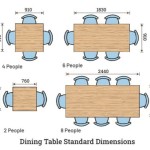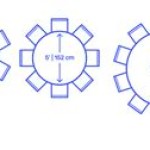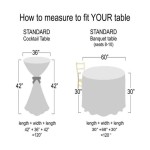New Office Table Design: Trends and Considerations for Modern Workspaces
The modern office environment is continuously evolving, demanding furniture solutions that are not only aesthetically pleasing but also functional and adaptable. Office tables, as a central element of the workspace, are undergoing a significant transformation. Contemporary designs prioritize ergonomics, technology integration, and collaborative functionality, reflecting the changing needs of today's workforce. This article examines current trends and key considerations in new office table design, focusing on the factors that contribute to a productive and comfortable work environment.
The design of office tables plays a crucial role in influencing employee well-being and productivity. A poorly designed workstation can lead to physical discomfort, decreased focus, and even long-term health issues. Conversely, a well-designed table promotes healthy posture, enhances collaboration, and contributes to a more positive and engaging work experience. Therefore, understanding the latest trends and carefully considering key design elements are essential for creating effective and efficient workspaces.
Ergonomic Considerations in Office Table Design
Ergonomics is paramount in modern office table design. The focus is on creating tables that support healthy posture and minimize strain on the body. This involves several key features. Adjustable height tables, often referred to as sit-stand desks, are increasingly popular. These tables allow employees to alternate between sitting and standing throughout the day, promoting better circulation, reducing back pain, and increasing energy levels.
The adjustability of the table is not limited to height. Surface angle adjustments are also becoming more common. These features enable workers to tilt the work surface to improve viewing angles and alleviate neck strain, particularly when working with documents or digital devices. The shape and size of the tabletop itself are also important factors. Tables with curved edges and ample surface area provide more comfortable and efficient workspace, allowing for easy access to tools and equipment without causing unnecessary reaching or stretching.
Material selection also plays a role in ergonomics. Tables with smooth, non-reflective surfaces reduce eye strain, while durable, easy-to-clean materials contribute to a healthier and more hygienic work environment. Edge treatments are critical to prevent wrist fatigue. Rounded or beveled edges prevent pressure points and discomfort when using keyboards and mice for extended periods. Keyboard trays, while sometimes considered outdated, can still provide ergonomic benefits by positioning the keyboard at a more comfortable height and angle.
Beyond the table itself, the surrounding environment contributes to overall ergonomic comfort. Adequate lighting, proper chair support, and appropriate monitor placement are all essential components of a well-designed workstation. Integrating ergonomic principles into the design and implementation of office tables is a significant investment in employee well-being and long-term productivity.
Technology Integration in Modern Office Tables
In today's digitally driven workplace, technology integration is a crucial aspect of office table design. Tables need to seamlessly accommodate a variety of electronic devices, including laptops, monitors, smartphones, and tablets. This requires careful consideration of power management, cable organization, and connectivity options.
Power outlets and USB ports are often integrated directly into the tabletop or within easy reach. This minimizes the need for extension cords and power strips, creating a cleaner and safer workspace. Cable management systems are essential for keeping wires organized and out of sight. These systems can include cable trays, grommets, and integrated channels that route cables efficiently and prevent tangling. Wireless charging capabilities are also becoming increasingly popular, allowing employees to charge their devices without the need for cables.
Some tables are designed with built-in monitor arms, which allow for easy adjustment of monitor height and viewing angle. These arms can also free up valuable desk space. Docking stations and USB hubs are often incorporated into the table design, providing convenient access to multiple ports and peripherals. Collaboration is enhanced by tables that feature integrated display screens and video conferencing equipment. These tables are ideal for meetings, presentations, and remote collaboration.
The materials used in the table construction also influence technology integration. Non-conductive materials are preferred to prevent electrical hazards. Durable surfaces that are resistant to scratches and spills are essential for protecting electronic devices. Ultimately, the goal is to create a workspace that seamlessly integrates technology, allowing employees to focus on their work without being distracted by cluttered cables or inconvenient power access.
Promoting Collaboration Through Office Table Design
Modern office design increasingly emphasizes collaboration and teamwork. Office tables play a crucial role in facilitating these interactions. Tables designed for collaborative work environments are typically larger than individual workstations and feature configurations that encourage communication and interaction.
Modular table systems are a popular choice for collaborative spaces. These systems consist of individual table segments that can be easily configured to create different layouts. This allows for flexibility in adapting the workspace to changing needs. Round or oval tables are often preferred for meetings and brainstorming sessions, as they promote equal participation and encourage open communication. Rectangular tables are suitable for tasks that require individual focus, while still allowing for easy collaboration.
Tables with built-in whiteboards or writable surfaces are also valuable for collaborative work. These surfaces provide a convenient space for brainstorming, sketching, and sharing ideas. Acoustic panels can be integrated into the table design to reduce noise and improve focus in open-plan offices. These panels can be attached to the table legs or suspended from the ceiling to create a more private and comfortable workspace.
The height of the table also influences collaboration. Standing height tables are becoming increasingly popular for informal meetings and quick discussions. These tables encourage movement and interaction, promoting a more dynamic and energetic work environment. Tables with varying heights can be combined to create a versatile workspace that accommodates different types of activities.
Beyond the physical design of the table, the surrounding environment also plays a role in promoting collaboration. Comfortable seating, adequate lighting, and access to technology are all essential components of a collaborative workspace. Thoughtful placement of tables can also encourage spontaneous interactions and facilitate the flow of information.
In addition to these core design considerations, sustainability is a growing concern in office furniture design. Increasing numbers of companies and employees prioritize environmentally friendly materials and manufacturing processes. Office tables made from recycled materials or sustainably sourced wood are becoming more common. Manufacturers are also focusing on reducing waste and minimizing the environmental impact of their products.
Businesses are also exploring biophilic design principles, which incorporate natural elements into the workspace to promote employee well-being. This can involve using natural materials, incorporating plants, and maximizing natural light. Office tables can be designed to integrate plants or other natural elements, creating a more calming and restorative work environment.
Finally, aesthetics remain an important consideration in office table design. Tables should complement the overall design of the office and reflect the company's brand identity. A wide range of styles, materials, and finishes are available to suit different tastes and preferences. Carefully selecting the right table design can contribute to a more visually appealing and inspiring workspace.
By carefully considering these factors, businesses can create office spaces that are functional, comfortable, and conducive to productivity. The modern office table is more than just a piece of furniture; it is a central element of the workspace that plays a crucial role in shaping employee well-being and performance. The evolution of office table design reflects the changing needs of the modern workforce, and by embracing these trends, companies can create workspaces that are both effective and engaging. Investing in well-designed office tables is an investment in the future of the organization.

30 Latest Office Table Designs With S In 2024 Design Modern

30 Latest Office Table Designs With S In 2024 Design Modern

New Design Office Table Desk Melamine Executive Modern China Furniture Made In Com

30 Latest Office Table Designs With S In 2024 Design Contemporary Furniture
100 Best Office Table Design Ideas

Classic Office Table Desk Luxury Boss Trust Design
100 Best Office Table Design Ideas

Buy L Type Office Table For Executive In Wooden Chocolate Brown White Finish

Buy Best Office Table Design For Small Space From Alfa Furniture

Buy Office Table With Wooden Teak Finish In Brown Color
Related Posts








